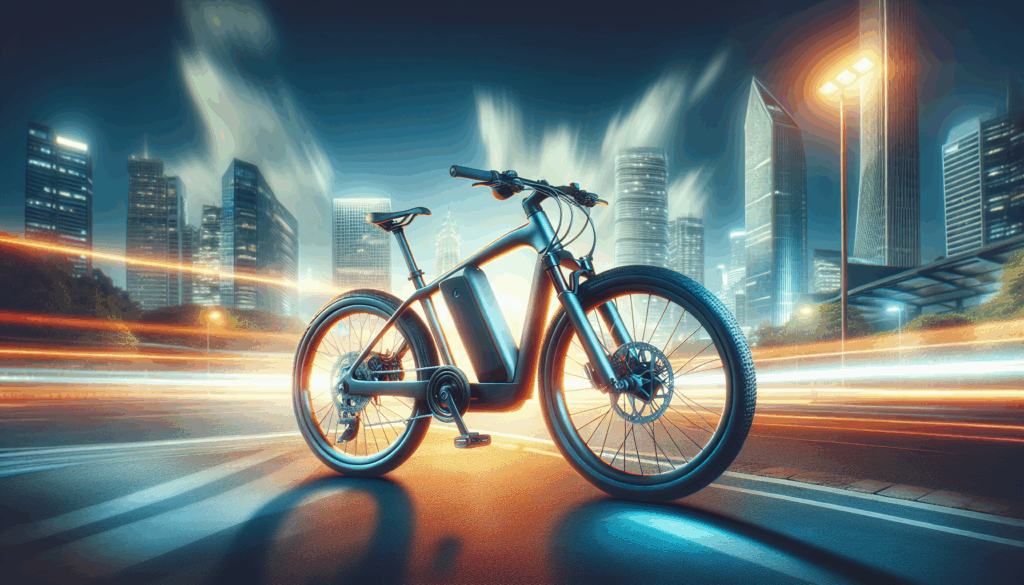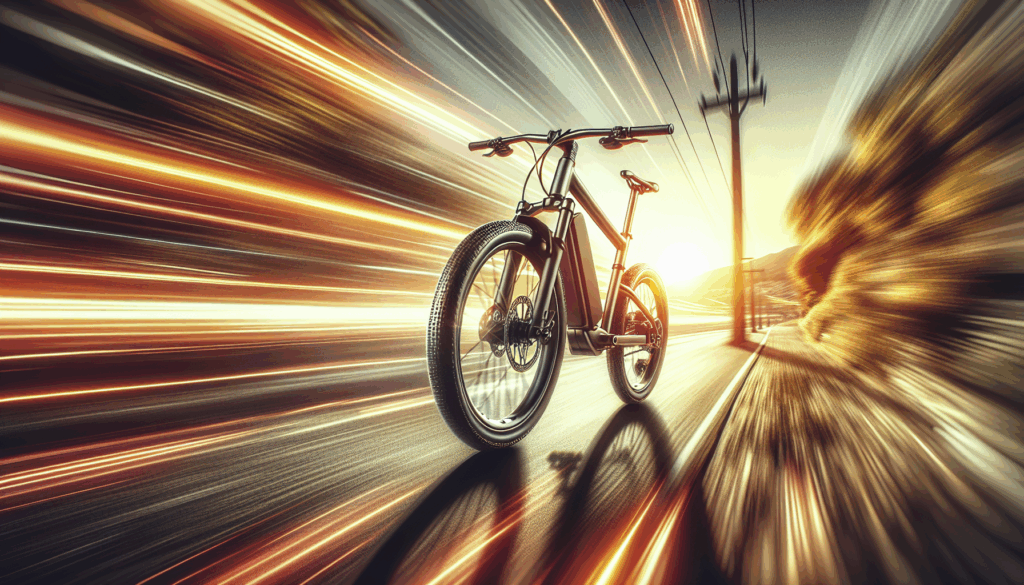
In the ever-evolving world of electric bicycles, the ADO A20 Lite and A20 Air stand out as remarkable models, each offering unique features tailored to different riding preferences. While both bikes share a similar foundation, including a 36V 9.6Ah Li-ion battery with a range of approximately 60km and a maximum load capacity of 100kg, the nuances in their design truly differentiate them. For instance, the A20 Lite employs a cadence sensor and mechanical disc brakes, whereas the A20 Air boasts a torque sensor and advanced hydraulic brakes. In this blog, we will decode these differences, exploring how they impact performance and provide insights for potential buyers looking to make an informed decision in the electric bicycle market.
Overview of ADO A20 Lite and A20 Air Features
The ADO A20 Lite and A20 Air are two impressive electric bicycles that cater to different preferences and riding styles. Both models come equipped with a powerful 36V 9.6Ah Li-ion battery, providing a range of approximately 60km, and have a maximum load capacity of 100kg. One of the main features that set them apart lies in their sensor technology; the A20 Lite electric bicycle utilizes a cadence sensor, which detects the rider’s pedaling speed to activate the electrical assist.
This type of system is well-suited for riders who favor a more constant and stable output, allowing for an enjoyable ride without the need for continuous adjustments. Additionally, the A20 Lite electric bicycle is equipped with reliable mechanical disc brakes, ensuring effective stopping power at a more affordable price of RM 3,699.
In contrast, the ADO A20 Air electric bicycle incorporates a more advanced torque sensor, offering a responsive assist that adjusts according to the rider’s pedaling force. This feature enhances the overall riding experience, making it ideal for those who seek a more natural feel, especially during intensive rides or uphill journeys. Furthermore, the A20 Air electric bicycle is fitted with hydraulic brakes, which provide superior stopping power and modulation compared to mechanical disc brakes. At a price point of RM 4,899, the A20 Air appeals to cyclists who prioritize precision and performance in their ride, making the differences between the two models not just functional, but significantly transformative for the rider.
Understanding Cadence Sensors vs Torque Sensors in Electric Bicycles
When exploring the ADO A20 Lite and A20 Air electric bicycles, one of the key differences lies in their sensor technology, specifically the cadence sensor in the A20 Lite and the torque sensor in the A20 Air. The cadence sensor measures how fast you are pedaling, which means it provides assistance based on your pedaling speed. This results in a more consistent electrical assistance, perfect for riders who enjoy maintaining a steady pace without much fluctuation.
On the other hand, the torque sensor of the A20 Air assesses the amount of force applied to the pedals. This technology offers a more responsive and natural riding experience, adjusting the level of assistance based on the rider’s effort, making it ideal for those who like to tackle varied terrain and require on-the-fly adjustments in power. Given these distinctions, potential buyers should consider their riding style and preferences when choosing between these two models.
Both sensors enhance the overall performance of these electric bicycles, but they cater to different types of cyclists. The ADO A20 Lite’s cadence sensor is favorable for casual riders who favor a consistent power output, while the A20 Air’s torque sensor enriches the experience for more spirited cyclists seeking responsive assistance. Ultimately, understanding these differences is crucial in making an informed decision about which electric bicycle aligns best with your riding needs and preferences.
Benefits of Using Cadence Sensors in E-Bikes
In contrast, torque sensors, like those present in the ADO A20 Air, offer a more refined level of responsiveness by measuring the force the rider applies to the pedals. This means that the motor provides assistance proportional to how hard the cyclist is pedaling, ensuring optimal power usage and increased efficiency. For riders looking for a sportier and more dynamic riding experience, torque sensors can deliver enhanced performance, especially when navigating challenging terrains or steep inclines. As a result, while cadence sensors promote ease and comfort, torque sensors cater to those who crave control and adaptability in their electric bicycle journey.
Advantages of Torque Sensors in E-Bikes

Torque sensors play a crucial role in enhancing the overall riding experience of electric bicycles, particularly those like the ADO A20 Air. Unlike cadence sensors, which measure the pedaling speed of the rider, torque sensors assess the actual force being applied to the pedals. This results in a more intuitive and responsive power delivery, allowing for smoother acceleration and a more natural feel while riding. Riders can effortlessly switch between different levels of assistance based on their effort, making it ideal for various terrains, whether you are climbing uphill or cruising on flat surfaces.
The ADO A20 Air, equipped with a torque sensor, ensures that the electric assistance feels seamless and well-integrated with your pedaling, enhancing comfort as well as control. In addition to the enhanced responsiveness, torque sensors also contribute to improved efficiency and battery life. By precisely calibrating the support based on the rider’s input, e-bikes with torque sensors, such as the ADO A20 Air, can help maximize the range offered by the 36V 9.6Ah Li-ion battery.
Riders tend to use less energy while still enjoying a dynamic riding experience. Ultimately, the advantages of torque sensors over cadence sensors in e-bikes are evident, fostering a better synergy between the rider and the bike while ensuring a more enjoyable journey on every ride.
Exploring Mechanical Disc Brakes: Functionality and Performance
When comparing the ADO A20 Lite and ADO A20 Air electric bicycles, one of the standout features is their braking systems. The A20 Lite is equipped with mechanical disc brakes, which provide reliable stopping power and are generally easy to maintain. Mechanical disc brakes use cables to activate the brake pads, offering effective performance even in various weather conditions. However, they may require more frequent adjustments and can be less powerful compared to hydraulic systems, especially during prolonged use. This braking system is adequate for casual riding but can be slightly less responsive under high-stress situations.
On the other hand, the A20 Air incorporates hydraulic brakes, which utilize fluid to transmit force, delivering superior stopping power with less effort. Hydraulic brakes are known for their precise modulation and consistent performance, making them ideal for varying terrains. They require less maintenance and often provide better heat dissipation, which is essential during long descents or harsh riding conditions. While the initial investment may be higher with the A20 Air, the enhanced safety and performance provided by hydraulic brakes make it a worthwhile consideration for avid cyclists.
Hydraulic Brakes: Efficiency and Stopping Power Explained
Hydraulic brakes, as seen in the ADO A20 Air, offer superior stopping power and modulation compared to the mechanical disc brakes of the ADO A20 Lite. The key difference lies in how each braking system functions. Hydraulic brakes use a closed system filled with fluid that enables smooth and consistent braking force. This results in improved responsiveness and reduced hand fatigue, making it easier for riders to maintain control, especially during steep descents or in wet conditions. With hydraulic brakes, the A20 Air provides a more reliable and efficient braking performance, enhancing the overall safety and ride experience for the user, particularly for those who prioritize performance.
On the other hand, mechanical disc brakes, while effective, require more force to activate and can lead to inconsistent braking under extreme conditions. Riders may find it necessary to adjust them frequently to maintain optimal performance. The choice between these two systems is crucial and reflects the intended use of the e-bikes. Cyclists seeking a performance-oriented ride might lean towards the A20 Air with its hydraulic brakes, while those who appreciate straightforward maintenance might prefer the A20 Lite. Evaluating these features is essential in choosing the right electric bicycle to match your cycling needs and preferences.
Comparative Analysis: Cadence vs Torque Sensors in Real-World Scenarios
When it comes to electric bicycles like the ADO A20 Lite and A20 Air, the type of sensor used for pedal assist plays a crucial role in the riding experience. The A20 Lite features a cadence sensor, which detects how fast you are pedaling to determine the amount of electric assistance provided. This system is excellent for riders who prefer a smooth and consistent assist, making it ideal for leisurely rides or commuting over flat terrains. The cadence sensor allows for intuitive control but can sometimes feel less responsive in more varied terrains, where power management adjustments may be necessary.
In contrast, the A20 Air is equipped with a torque sensor that measures the force applied on the pedals. This provides a more dynamic and nuanced riding experience, as the electric assistance directly correlates with the rider’s effort. Riders who engage in climbing hills or navigating varied terrains will appreciate this responsiveness, as it offers a natural feel similar to traditional biking. Although both sensors promote an enjoyable riding experience, the choice between them could hinge on personal riding style and the environments one frequently encounters.
Choosing the Right Electric Bicycle for Your Needs

In conclusion, the differences between the ADO A20 Lite and A20 Air electric bicycles are significant and cater to varied riding preferences. The A20 Lite with its cadence sensor is tuned for riders who appreciate a more straightforward approach to pedal assistance, making it an excellent choice for casual and city riders. Conversely, the A20 Air features a more advanced torque sensor, providing a smoother and more responsive ride for those who prefer a more engaging cycling experience. Additionally, the brake systems set these models apart; the mechanical disc brakes on the Lite are reliable and functional, while the hydraulic brakes on the Air offer superior stopping power and modulation, perfect for off-road enthusiasts or harsher terrains.
Ultimately, your choice between the ADO A20 Lite and the A20 Air should be guided by your riding style and terrain preferences. Both models boast a similar battery capacity and load-carrying ability, providing a solid range and weight for city commuting. However, the specific features such as the sensor technology and brake type will significantly impact your experience. Be sure to consider how often you plan to ride, the types of environments you’ll encounter, and personal comfort to ensure you select the electric bicycle that best matches your needs.
